Addressing Financial Challenges in Medical Practices
Learn how to tackle financial challenges in medical practices with tips on cost reduction, cash flow management, and financing options.
CAPITAL OPTIONSFINANCING SOLUTIONSHEALTHCAREMEDICAL PRACTICE


Running a medical practice comes with a set of unique financial challenges. Rising operational costs, managing cash flow, and dealing with billing issues are common hurdles. These challenges can make it hard to maintain the quality of care your patients expect while keeping your practice financially healthy.
Operational costs for medical practices are consistently on the rise. From paying staff salaries to purchasing medical supplies and equipment, these expenses add up quickly. Effective cost management strategies are essential to mitigate these rising costs without compromising service quality.
Another significant challenge is managing cash flow. Ensuring a steady inflow of cash can be difficult due to delayed payments and billing issues. Efficient cash flow management is vital for covering day-to-day expenses and investing in the growth of your practice.
Finding the right financing options can also be a key factor in addressing financial challenges. Understanding the available financing solutions can provide the financial support needed to stabilize and grow your medical practice.
Key Takeaways
This article will help you understand the common financial challenges faced by medical practices, offer practical strategies to reduce operational costs, discuss ways to improve cash flow management, and explore various financing options available to medical practices.
Financial Challenges in Medical Practices
Medical practices face several financial challenges that can hinder their growth and efficiency. One of the biggest hurdles is the rising operational costs. Everyday expenses such as salaries for medical staff, utilities, and the cost of medical supplies continue to climb. This increase in costs can place a significant strain on a practice’s budget, making it difficult to allocate funds for other important areas like equipment upgrades or marketing.
Managing cash flow is another common challenge. Timely cash flow is crucial for meeting daily expenses, but delays in patient billing and insurance reimbursements can cause problems. Slow payments can disrupt cash flow, making it hard to maintain stability. Practices often have to juggle between paying their bills and collecting overdue payments, which can be time-consuming and stressful.
Billing issues also present a major financial challenge. Errors in billing can lead to delays and denials from insurance companies. This can result in lost revenue and increased administrative work to resolve the issues. Efficient billing processes are essential to ensure that claims are correctly processed and payments are received on time, maintaining the financial health of the practice.
Strategies for Reducing Operational Costs
Reducing operational costs is essential for the smooth running of a medical practice. Here are some practical tips to help manage and cut down expenses:
1. Negotiate with Suppliers: Regularly review contracts with suppliers and negotiate better rates for medical supplies and equipment. Building strong relationships with suppliers can also result in discounts or more favorable payment terms.
2. Optimize Staff Schedules: Efficiently managing staff schedules can prevent overstaffing during low-demand periods. Using part-time staff or adjusting shifts based on patient flow can save money on salaries and overtime.
3. Leverage Technology: Invest in technology that can streamline operations and reduce costs. Implementing electronic health records (EHRs) can cut down on paper costs and improve billing accuracy. Telemedicine can also reduce the need for physical office space and related expenses.
4. Energy Efficiency: Simple steps like using energy-efficient lighting and HVAC systems can lead to significant savings on utility bills over time. Regular maintenance of equipment ensures they operate efficiently, reducing repair costs.
5. Outsource Non-Core Functions: Consider outsourcing services like billing, IT support, and payroll. This can reduce the need for in-house staff and save on salaries, benefits, and training costs.
By applying these strategies, medical practices can cut down on operational costs, allowing more funds to be allocated towards improving patient care and expanding services.
Improving Cash Flow Management
Managing cash flow effectively is crucial for the financial health of any medical practice. Here are some steps to improve cash flow:
1. Timely Billing: Ensure that billing processes are swift and accurate. Use automated billing software to send invoices quickly and track payments. This reduces delays and increases the likelihood of prompt payments.
2. Efficient Collection Processes: Implement a clear collection process to follow up on unpaid bills. Regularly review accounts receivable and send reminders for overdue payments. Consider offering multiple payment methods to make it easier for patients to pay their bills.
3. Maintain a Financial Cushion: Keep a financial reserve to cover unexpected costs or delays in payments. A financial cushion can help smooth out cash flow fluctuations, ensuring that you can meet payroll and other crucial expenses without stress.
4. Negotiate Payment Terms: Work with suppliers and vendors to negotiate extended payment terms. This can give you more time to collect payments from patients before you need to pay your own bills.
5. Monitor Cash Flow Regularly: Use cash flow management tools to keep track of your inflows and outflows. Regularly reviewing your financial statements helps identify trends and potential issues before they become major problems.
By implementing these steps, medical practices can ensure a steady cash flow, which is essential for covering operational expenses and investing in growth opportunities.
Financing Options for Medical Practices
Financing options can play a key role in addressing capital challenges and supporting the growth of medical practices. Here are some financing solutions to consider:
1. Term Loans: These loans provide a lump sum of money that is repaid over a fixed period with interest. Term loans are ideal for significant investments like purchasing new equipment or expanding your facility.
2. Lines of Credit: A line of credit offers flexible access to funds up to a certain limit. You only pay interest on the amount you use. Lines of credit are useful for covering short-term needs like managing cash flow gaps or unexpected expenses.
3. Equipment Financing: This type of loan specifically covers the cost of new medical equipment. Equipment financing spreads the cost over the equipment’s useful life, making it easier to afford expensive technology upgrades.
4. Invoice Factoring: Sell your unpaid invoices to a factoring company at a discount to get immediate cash. Invoice factoring helps improve cash flow without taking on additional debt.
5. SBA Loans: Small Business Administration (SBA) loans offer long repayment terms and lower interest rates. These loans are backed by the government and can be used for various purposes, including working capital and equipment purchase.
By exploring these financing options, medical practices can find the financial support they need to overcome challenges and achieve sustainable growth.
Final Thoughts
Addressing financial challenges is crucial for the success and growth of medical practices. Rising operational costs, managing cash flow, and billing issues are typical obstacles that require strategic solutions. Implementing cost-reduction strategies, improving cash flow management, and exploring suitable financing options are vital steps to ensure financial stability.
Medical practices can benefit from negotiating with suppliers, optimizing staff schedules, and leveraging technology to reduce expenses. Additionally, enhancing cash flow through timely billing, efficient collection processes, and maintaining a financial cushion is essential. Exploring various financing solutions, from term loans to lines of credit, can provide the needed financial support.
By adopting these strategies, medical practices can navigate financial challenges and focus on delivering quality patient care. Ready to secure the financing you need to overcome financial challenges in your medical practice? Contact Want Capital Now to explore tailored medical practice financing solutions that can help you achieve sustained growth and financial stability.


